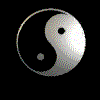| GLOSSARY of COMMON TERMS Common terms use in the art of Tai Chi Chuan. Quoted material is adapted from the Tai chi Ch'uan Ta Wen. |





| GLOSSARY of COMMON TERMS Common terms use in the art of Tai Chi Chuan. Quoted material is adapted from the Tai chi Ch'uan Ta Wen. |